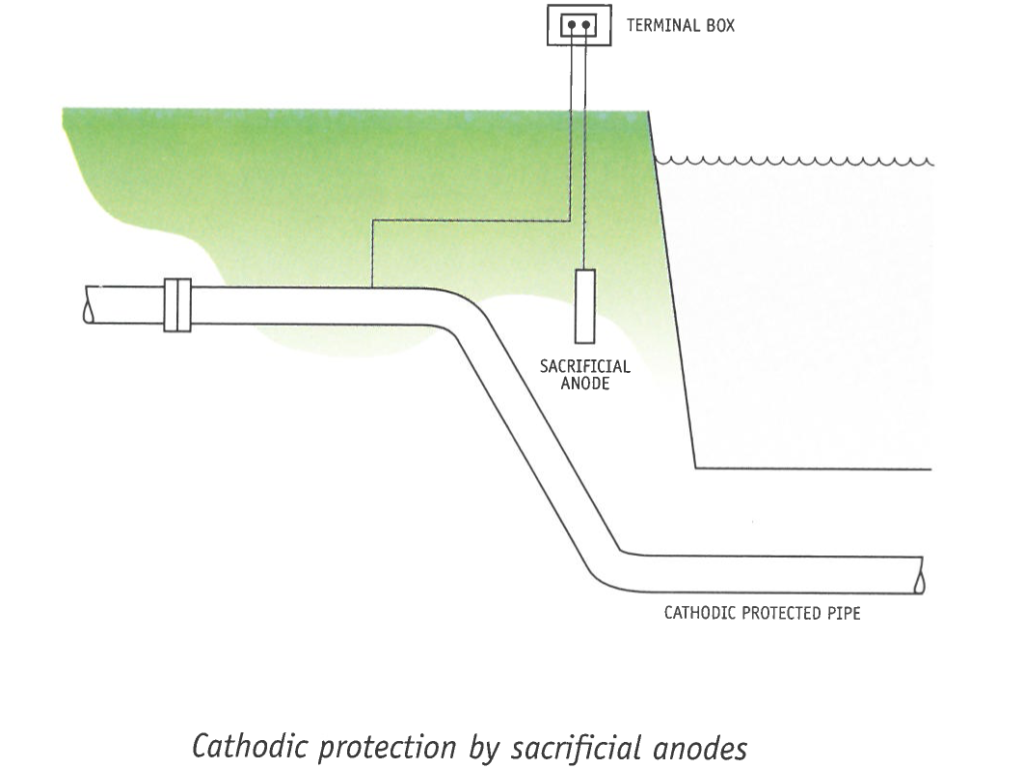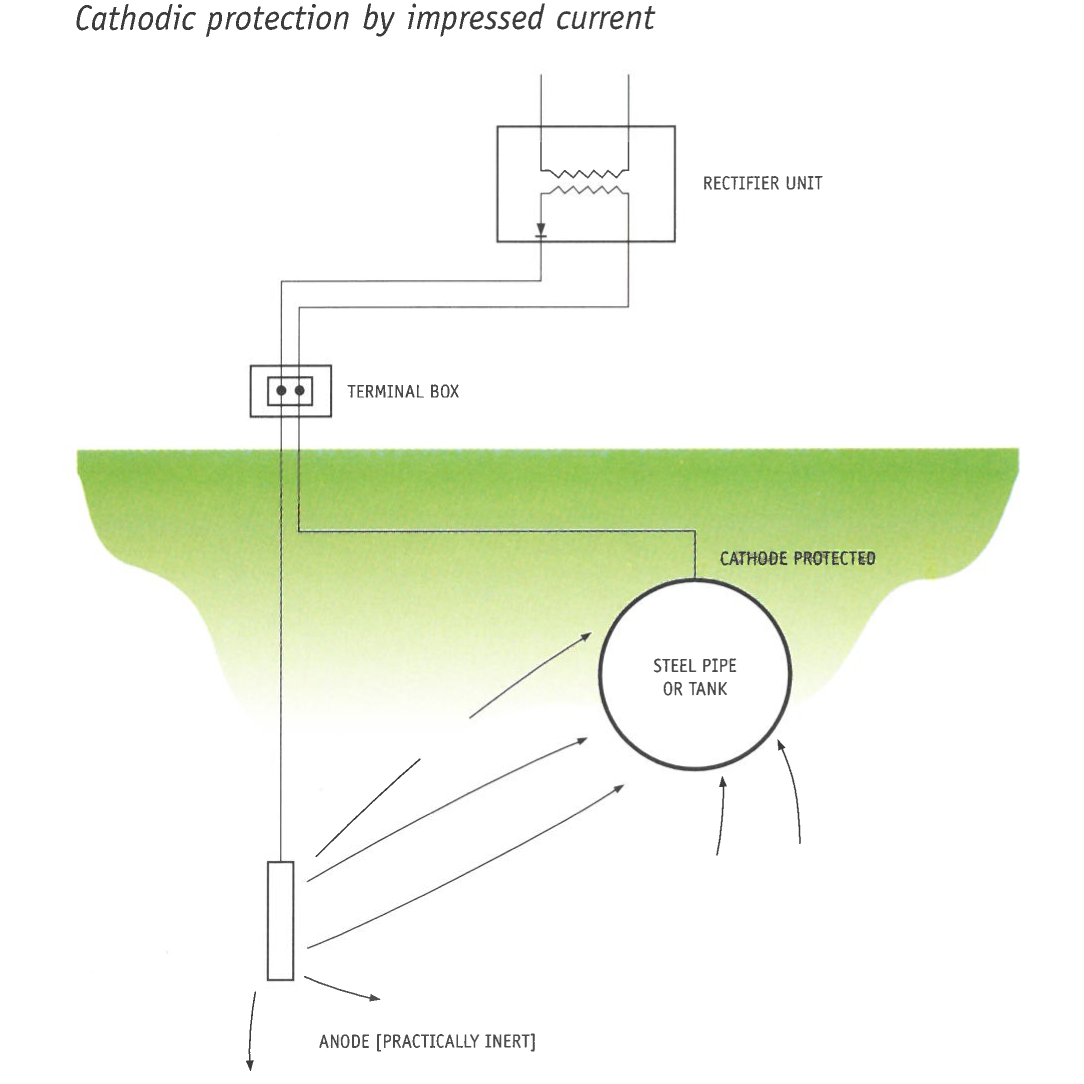What is cathodic protection?
What is cathodic protection?
Cathodic protection is an electrochemical method to prevent corrosion on steel or other metallic objects. These objects can be either submerged or buried. Cathodic protection uses the addition of direct current towards metallic objects to shift the object potential to values where corrosion is effectively suppressed. This direct current can be delivered by sacrificial anodes or with the use of an external current source.
Cathodic protection is generally applied as a secondary method to protect against corrosion. The primary corrosion protection should be provided with a high quality and strongly adhesive coating. Using a coating the required protection current for cathodic protection is reduced to small values, whereas the corrosion protection with cathodic protection increases specifically at coating defects or other locations with reduced resistance. Any places on the object where the coating deteriorates will be safeguarded from corrosion by cathodic protection. However, cathodic protection under a disbonded coating is not possible.
How does cathodic protection work?
When two dissimilar metals (electrodes), such as zinc and steel, are immersed in a conductive liquid (electrolyte) and a voltmeter is placed between them, an electrical potential difference between these electrodes will be measured. If the voltmeter is replaced by an ammeter, an electrical current will be seen to flow from the so called noble element (in this case steel) to the less noble metal (zinc).
In this particular cell, the less noble metal zinc is called the anode and the more noble metal steel is called the cathode. On both electrode surfaces electrochemical reactions take place. The anode (zinc) slowly dissolves in the electrolyte while it protects the cathode (steel) against corrosion. This method of protection is called cathodic protection by sacrificial or galvanic anodes.
Cathodic protection with sacrificial anodes
This technique was first applied in England by Sir Humprey Davy. His wooden ships covered with copper shields were cathodically protected by ferric iron blocks. The latter acted as the anodic part of a corrosion cell and dissolved while the copper shielding remained free of corrosion. Materials nowadays generally applied as sacrificial or galvanic anodes are:
- Zinc and aluminium alloys for offshore installations.
- Magnesium and zinc alloys for land installations.
Cathodic protection with impressed current
Cathodic protection is also possible with the application of non-galvanic anodes. An external DC-source such as a rectifier or an accumulator is used to deliver the required current. This method is called cathodic protection by impressed current. The current transmission with these systems can be much greater than that based on sacrificial anodes, which makes this method more suitable to protect large surfaces and structures. Anode materials applied for impressed current systems are (almost) inert and are generally composed of:
- High-silicon iron
- Platinized titanium (see picture)
- Mixed metal-oxide
Cathodic protection with sacrificial anodes or impressed current?
Factors that influence the choice between galvanic anodes or an impressed current system are:
- economical considerations,
- presence of stray currents,
- availability of electrical power supply,
- site lay-out,
- statutory and other provisions,
- presence of other structures,
- maintenance.
When do we apply cathodic protection?
The application of cathodic protection on metallic objects depends mainly on the nature of the soil or water in which the object is buried or immersed. Generally speaking, cathodic protection is required when:
- The soil resistance of the environment is equal to or lower than 10,000 Ohm.cm
- The object is interfered by stray currents from other DC-sources
- Two different metals are in some way connected to each other which results in a corrosion cell
- The environment is anaerobe
Of course the use to which the object is being put is also an important factor. From an environmental point of view, the necessity for the cathodic protection of an oil transport pipeline is obviously more evident than it is for a sewer pipeline. There can also be an economical reason to protect a buried construction. In many cases the application of cathodic protection is made compulsory by local authorities or other principals.
Read more about our cathodic protection services.


